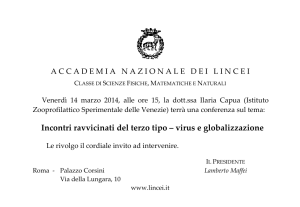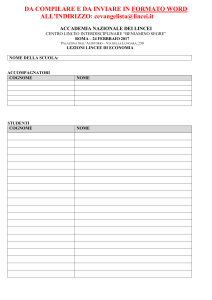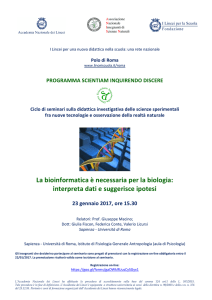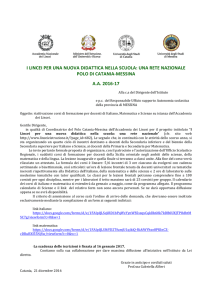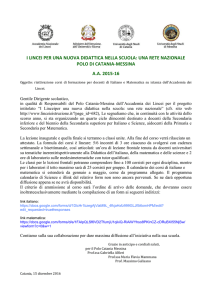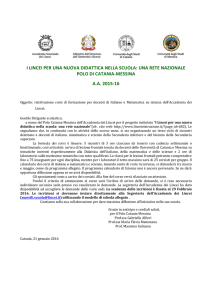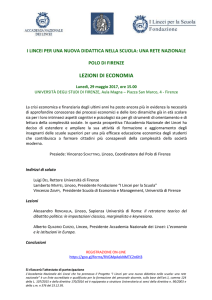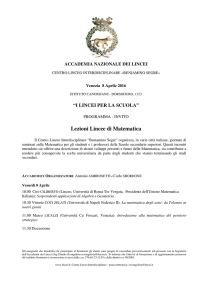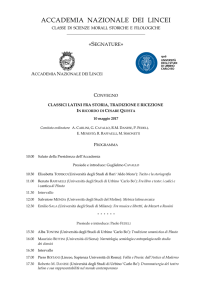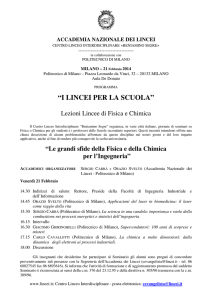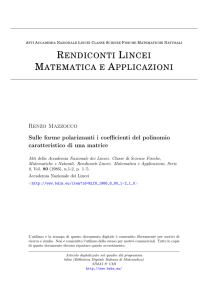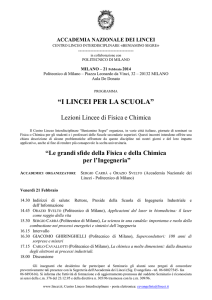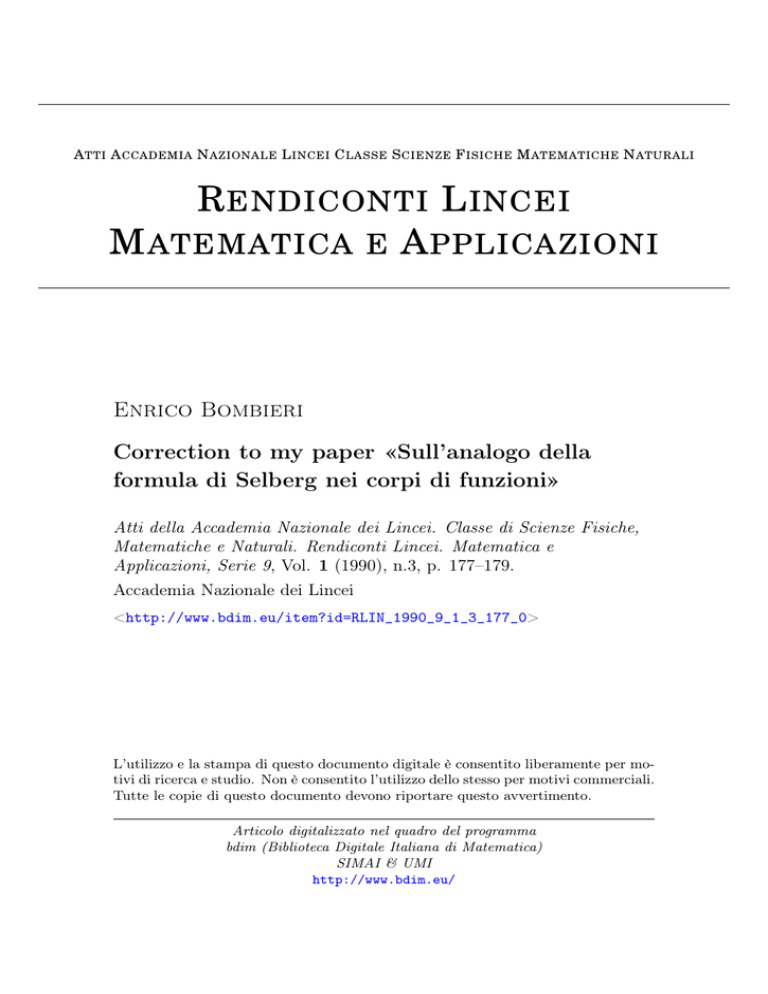
A TTI A CCADEMIA N AZIONALE L INCEI C LASSE S CIENZE F ISICHE M ATEMATICHE N ATURALI
R ENDICONTI L INCEI
M ATEMATICA E A PPLICAZIONI
Enrico Bombieri
Correction to my paper «Sull’analogo della
formula di Selberg nei corpi di funzioni»
Atti della Accademia Nazionale dei Lincei. Classe di Scienze Fisiche,
Matematiche e Naturali. Rendiconti Lincei. Matematica e
Applicazioni, Serie 9, Vol. 1 (1990), n.3, p. 177–179.
Accademia Nazionale dei Lincei
<http://www.bdim.eu/item?id=RLIN_1990_9_1_3_177_0>
L’utilizzo e la stampa di questo documento digitale è consentito liberamente per motivi di ricerca e studio. Non è consentito l’utilizzo dello stesso per motivi commerciali.
Tutte le copie di questo documento devono riportare questo avvertimento.
Articolo digitalizzato nel quadro del programma
bdim (Biblioteca Digitale Italiana di Matematica)
SIMAI & UMI
http://www.bdim.eu/
Atti della Accademia Nazionale dei Lincei. Classe di Scienze Fisiche, Matematiche e
Naturali. Rendiconti Lincei. Matematica e Applicazioni, Accademia Nazionale dei
Lincei, 1990.
Rend. Mat. Ace. Lincei
s. 9, v. 1:177-179 (1990)
Teoria dei numeri. — Correction to my paper «Sull'analogo della formula diSelberg
nei corpi di funzioni». Nota (*) del Socio ENRICO BOMBIERI.
ABSTRACT. — This Note completes and corrects a preceding Lincean Note by introducing through a
tauberian theorem an appropriate condition which removes a counter-example provided by Dr. Zhang.
KEY WORDS: Tauberian theorems; Abstract prime number theorems.
RIASSUNTO. — Correzione alla mia Nota «Sull'analogo della formula di Selberg nei corpi di funzioni». La
presente Nota completa e corregge una Nota Lincea precedente introducendo, attraverso un teorema
tauberiano, un'opportuna condizione che elimina il controesempio trovato dal Dott. Zhang.
It has been pointed out to me by Prof. H. Diamond and Dr. Wen Bin Zhang that
the proof of Theorem 1 in the paper quoted in the title [1] is defective in the last part of
the argument. The trouble arises from the fact that the left hand side of eq. (33) is not
an approximation to its continuous form (28), so that the application of Wirsing's
Lemma is not justified. In fact, Dr. Zhang makes the important observation that some
other condition, other than (24) and am ^ 0, is needed to infer that am ~~ 1, as shown by
the example am = 2 if m is odd, am = 0 if m is even.
The following tauberian theorem introduces an appropriate condition which
removes the possibility of Dr. Zhang's example.
THEOREM
1. Suppose that am = 0 and
m-\
mam + 2 &i&m-i= 2m + 0(1)
(1)
i
(2)
ma2m +
2
i
*2I42W-2I = 2m+
0(1).
Then am~ 1.
Let am=l + rm. As in our earlier paper, the positivity of am and (1) imply
(3)
mrm+ £ rkrm-k = 0(l)
(4)
k«l = 1 + 0(1/»)
m
(5)
2rk=0(l),
1
these results being eqs. (29), (30) and (26) of our earlier paper.
LEMMA.
PROOF.
There is a S > 0 such that \rm + rm+1\ =2 — S for all sufficiently large m.
From (3) and (4) we obtain
m\rm + rm+1\^ 2 \rk+ rk+l\ + 0(logm).
(*) Presentata nella seduta del 13 gennaio 1990.
178
E. BOMBIERI
Suppose, contrary to the conclusion of the lemma, that \rm + rm+1\ > 2 — S and let J
be the set of indices k such that \rk + rk+1\ =i2 — e and k = m. In any case we have
\rk + rk+1\^2 + 0(1/k),
hence m(2-S) â (2 - e)\l\+2(m - \I\) + 0(hgm).
We
choose £ = V£ and get \l\ ^ ySm + O(log m). This means that \rk 4- rk+1\ > 2 — y £ for
all but y £#z + 0(log m) exceptions k> and it follows that if m is large enough there is an
interval K= [£ 0 ,£i], with m/2<k0<m,
and |K| > 1/(3 V#), such that
(6)
|r*+ r*+1| > 2 - V ^
for & G K.
Since |r*| ê 1 + 0(1/k), the last displayed inequality shows that fk and r^+i have the
same sign for k e K. Hence
2 n ^(2-V*)W>(2-V*V(3V*),
keK
which contradicts (5) if £ is small enough.
Let limsup \rm\ = ^ 4 ^ 1 . Now (3) yields A^A2
hence either A = 0 or A = 1. If
yl = 0 there is nothing to prove, therefore we may assume that limsup \rm\ = 1. By (3)
and (4) we infer
w—i
^ k J = k=l
2 H + 0(hgm).
Let e be small and let m be large such that | r j > 1 — s. If we argue as in the proof of the
lemma we see that |^| > 1 — y e for k = my except possibly for a set of cardinality at
most y em + O(logm), and again we see that there is an interval K = [k0, k{\ such that
m/2<k0<m,
\K\>l/\3\e)
and \rk\^l-\e
for keK. This inequality and the
preceding lemma show that if a < S2/4 then the r^s must alternate in sign throughout
the interval K. It follows that
(7)
E h, a(l - y7)(\K\/2 - 1) >(l - \fe)/{6 V7) - 1.
So far we have not used hypothesis (2) of Theorem 1. However it is clear that
a2m = 0 and (2) yield the analogue of (5), namely
2 ^
= 0(1),
which contradicts (7) if e is small enough. Thus the hypothesis A = 1 is untenable and
the proof of Theorem 1 is complete.
To prove Theorem 1 of our earlier paper it remains to verify condition (2).
However the statement of condition (2) is nothing else than (24) of our earlier paper
applied not to the curve C defined over the finite field \_q\ with q elements, but rather to
the curve C defined now over the field [q2]. Thus Theorem 1 of our earlier paper is a
formal consequence of Selberg's Lemma for the curve C over the field [q] and the
curve C over the field [q2].
We remark that a refinement of the above argument can be used to show that the
asymptotic formula rm + rm+i ~ 1 holds, hence am + am+i ~ 2 , as a consequence of (1)
and the positivity of am\ it is an open problem whether these hypotheses suffice to
prove that either am~ 1 or am~ 1 + (— l)m~l.
CORRECTION TO MY PAPER «SULL'ANALOGO DELLA FORMULA DI SELBERG NEI CORPI DI FUNZIONI»
179
REFERENCES
[1] E. BOMBIERI, Sull'analogo della formula di Selberg nei corpi di funzioni. Atti Acc. Lincei Rend, fis., s. 8,
vol. 35, fase. 5, 1963, 252-257.
School of Mathematics - The Institute for Advanced Study
Olden Lane - PRINCETON, NEW JERSEY 08540 (USA)

